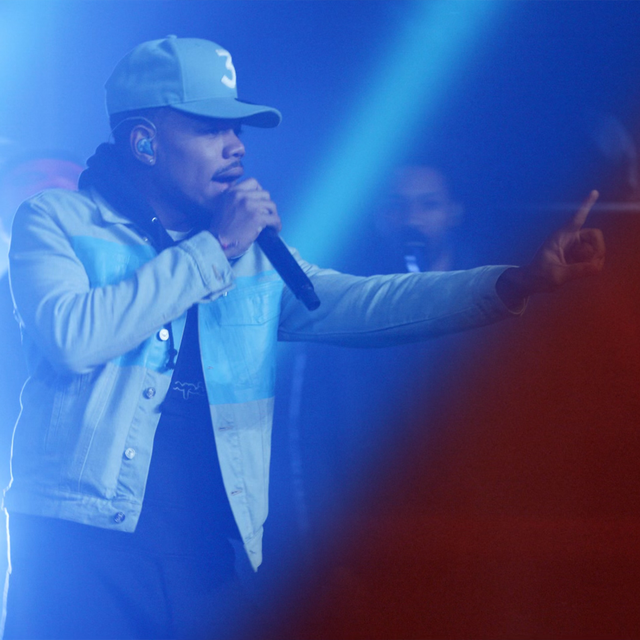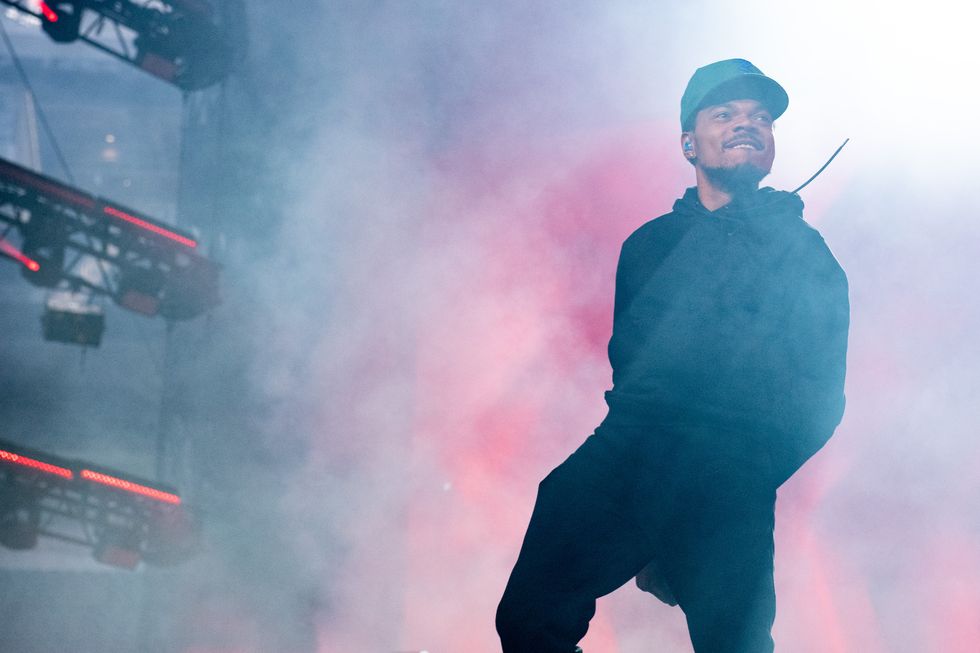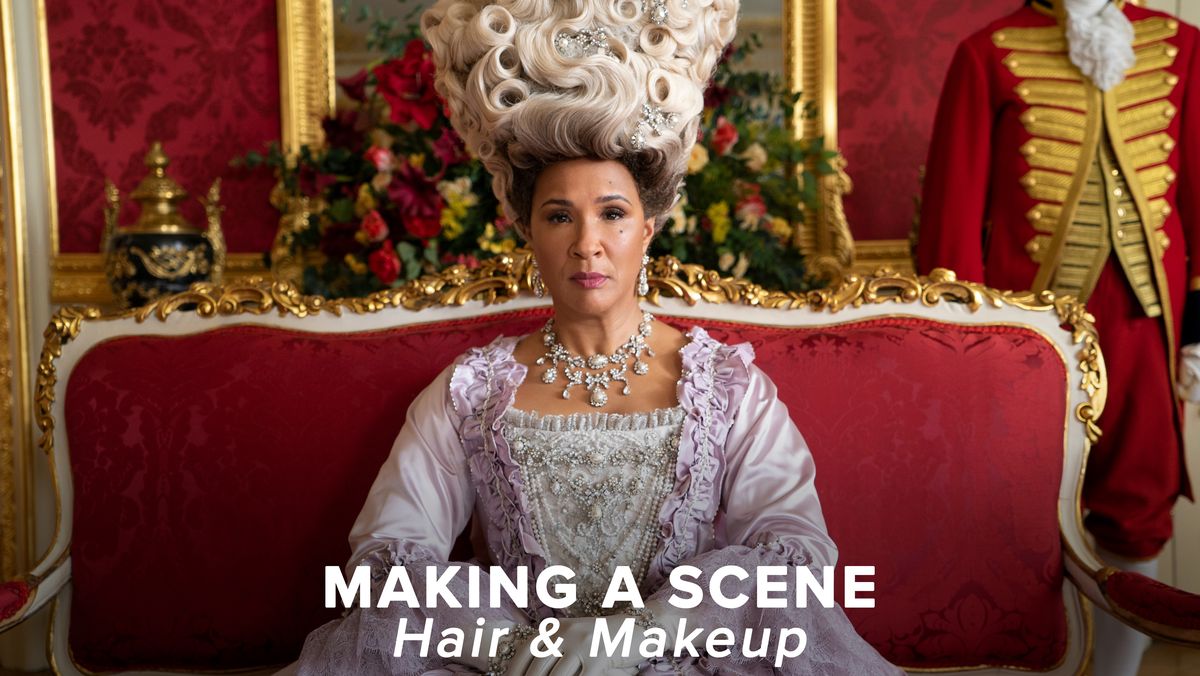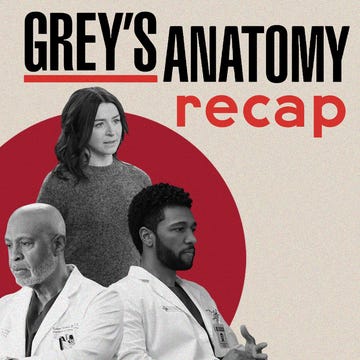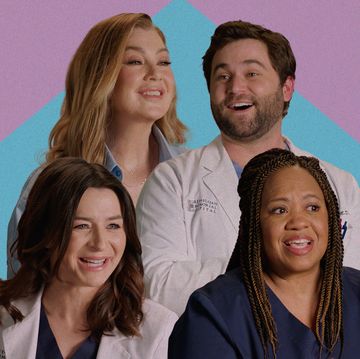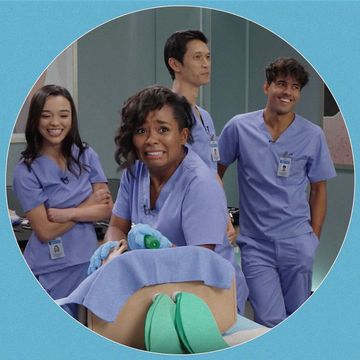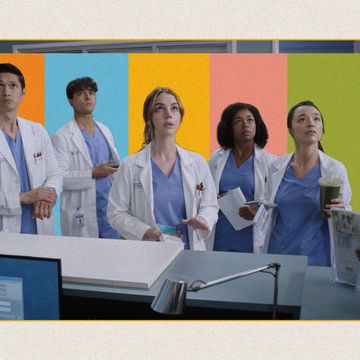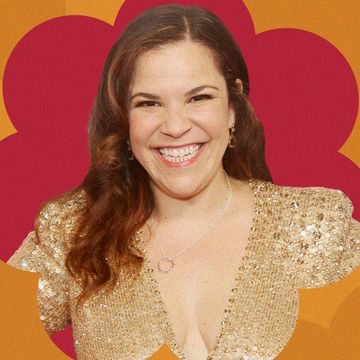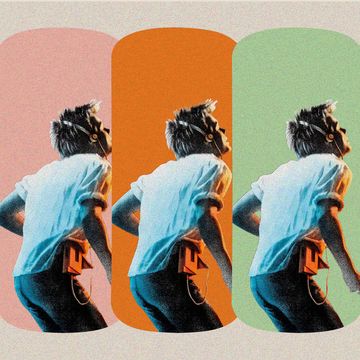Life as an artist in the not-so-roaring 2020s hasn’t been easy. With the ongoing coronavirus pandemic causing tour postponements and cancellations, the music industry has truly taken a hit. However, 2021 has one silver lining: Filmmakers and musicians are still creating, even if they can’t always hit the road to promote their work.
But Chance the Rapper has found a new way to bring his music directly to the people, with the new concert film Magnificent Coloring World. The project combines elements of next-level production with the splendor of Chance’s Grammy Award-winning mixtape, Coloring Book. The film, in which Chance led the editing process and was self-distributed through his House of Kicks umbrella, highlights never-before-seen footage of a secret showcase he filmed in 2017 in his Chicago hometown for his biggest fans.
This year marks the five-year anniversary of the release of the acclaimed album Coloring Book, yet Chance is not resting on his past accolades. For example, last year he quickly adapted to stay-at-home orders and created 11 virtual concerts. Furthermore, he wrote and directed the virtual concert film Chi-Town Christmas and was a featured artist on Justin Bieber’s song “Holy.” Last month, Chance released Magnificent Coloring World exclusively in AMC Theatres, and he also performed live at Milwaukee’s Summerfest earlier this month.
Recently, Shondaland spoke with the inimitable rapper about the inner workings of Magnificent Coloring World, evolving as an artist since releasing Coloring Book, and the focus of his company, House of Kicks.
GABRIELLE NICOLE PHARMS: Congrats on Magnificent Coloring World! How long was this film in the making? How did the concept come to life?
CHANCE THE RAPPER: I did the principal shooting in 2017. It was an idea that came from me just kind of getting into staging and trying to figure out new set designs for my shows, and at the same time really getting into film. I basically shot this whole thing in a day but built out the set over the course of three weeks and wrote the treatment for it and got the dances choreographed and choir together and the new arrangements in three weeks’ time period, and then shot it.
Then, just to be honest, I didn’t really know how to edit film at the time. I knew what I wanted but didn’t really know how to, and so in the last year I’ve learned a lot more about filming, or in the last few years, and was able to assemble an editing team and put this thing together and finish it in the last year. So, it was definitely something that came together over time. It was always something that I wanted to do — specifically, having a movie in the movie theaters is something that I wanted since I was really young. I am very grateful that it was able to come into fruition.
GNP: Getting into the inspiration behind the creative direction of the film, what were some things that helped influence this project?
CTR: I think, for one, when I shot a video in 2015 for a song called “Sunday Candy.” The concept of the video was that we were moving through spaces that were kind of built by the silhouettes of set pieces — like a house, apartment, or a storefront. We’re all kind of being thrown into this small soundstage and creating the setting just through camera work as opposed to cutting.
I really liked that idea, and I really liked the idea of a forward-moving scene because you kind of get tired of looking at the same thing onstage for a long time, like a festival or any concert. So set changes, like literal set changes, is something that’s kind of hard to pull off when everybody’s looking in the same space. So, I built this stage — that was really like five stages in a semicircle — and a huge dolly floating stage that moved between two of those so that I could kind of make this full narrative circle.
GNP: I’m glad you brought that up. The film really ties in well with Coloring Book being so cohesive. It feels like a story.
CTR: It was shot at a time when I was making a very sharp character arc, if that makes any sense. I’m not a movie character, but in the film I am, I guess. I’m presenting this show about what was going on in my life and kind of telling the story of this transformation I was going through, and it goes through the songs in a way that — I don’t want to give away too much of the movie, but it’s very intentional in the way that it moves through the songs, and the setlist is something that I’ve literally actually only performed in that space and time. All the arrangements are noticeably different from how I performed them on the tour or in recent times.
GNP: I love your fans. I saw on Twitter that some of them drove three hours to a theater just to see the film. Do you have any favorite moments that you revisited when you saw the movie in person?
CTR: Yeah. Going to the movie theaters is such an experience, you know. We’ve spent a year locked down where no one was going to the theater. I feel like my music, or my career especially when it comes to shows, has always been about the experience in addition to the show. I had a lot of situations, especially at my Chicago shows when I was playing [Lollapalooza], or when I threw my own festival where tickets would be available at random popular Chicago hometown restaurants, or events where I’ve hidden tickets or hidden songs but done certain things around the city where it’s an experience-based thing.
The shoot of the video itself was an experience, because the people that came had no idea they were going to a concert; they were just told about it about 24 hours before the shoot and picked out of my top one percent of SoundCloud listeners and were told to meet at a random school. We had school buses that took them to this location and took their phones away so they couldn’t give the footage up, and just put them in this experience.
I feel like the movie-theater part is what makes us so real. There’s a difference on the scale alone of going to see a movie where you’re watching on a giant screen and have surround sound, but also the event of going somewhere and because everything is all about accessibility and the ease of watching something in the now.
Going to a movie theater is a commitment that you make and an event that you plan basically. You’re in this community of people that you don’t know and also don’t know anything about the movie, in most cases. So, you’re experiencing this thing all together at once. I’ve never seen a concert film in a theater other than maybe when I went to go see Kevin Hart’s movie. It’s a cool thing, especially because the album’s been out for five years. It’s popular, especially among my fans, where it’s like, I went to the theater to finally go see it because I was busy the first weekend. I went to go see it the other night and to experience people singing along and just watching it — it even felt new to me. I feel like the theaters need more concerts, especially when they’re done in an intentional way.
GNP: With the pandemic, you’ve really adapted by pivoting to virtual concerts. You don’t rest on your laurels. So, with staying relevant and staying true to yourself, how do you find that balance?
CTR: That’s a good question. I’ve always managed to — I feel like, at least — make decisions that I believe in and that I feel like represent me. I think that relevance is kind of out of your control. The machine does what it does, and then the people do what they do. It’s not that you don’t want to be relevant, but you don’t really get to choose. You only get to be yourself and make what you make and do what you do, and hope that it resonates with people. I feel like relevancy is based on branding and what you want to get across, and a lot of time it’s out of your control. You can only control what you make.
GNP: It’s been five years since Coloring Book and your Grammy wins. How do you feel like you’ve evolved as an artist and as a person? What have you learned about yourself?
CTR: I guess I’ve learned that I love to perform and make music, and I love to be in control of the amount of time that I put into — I don’t want to say less important — the nonessential tasks of being a working adult. I feel like it’s always good to work and live in a country at a time when it’s [good] to be an entrepreneur and to be as thorough and as abundantly successful as possible. Also, sometimes it’s good to just chill and be grateful for what you have and spend time in reflection and with your family and not always necessarily be on some “what’s next?” shit.
GNP: My last question goes back to you talking about being an entrepreneur and just focusing on being an artist. I’m curious about House of Kicks. I know it’s a film house, but would you say it’s also where you go to get inspiration? What is it exactly?
CTR: House of Kicks is where I’m at right now. You’re right. It’s a film house. It’s where we edit and shoot and write film. It’s also the work space that we utilize to do my obvious day job, which is rapping. We also party hard here — I don’t want to leave that out. There’s probably going to be one more House of Kicks party before the end of the summer. But, yes, it’s where we produced and edited the Magnificent Coloring World film. That’s where I shot and recorded “The Heart & the Tongue” music video. And it’s where a lot of the new material is coming out of.
Gabrielle Nicole Pharms is an entertainment and lifestyle writer based in Austin, Texas. Follow her on Twitter @gabbynikki.
Get Shondaland directly in your inbox: SUBSCRIBE TODAY
